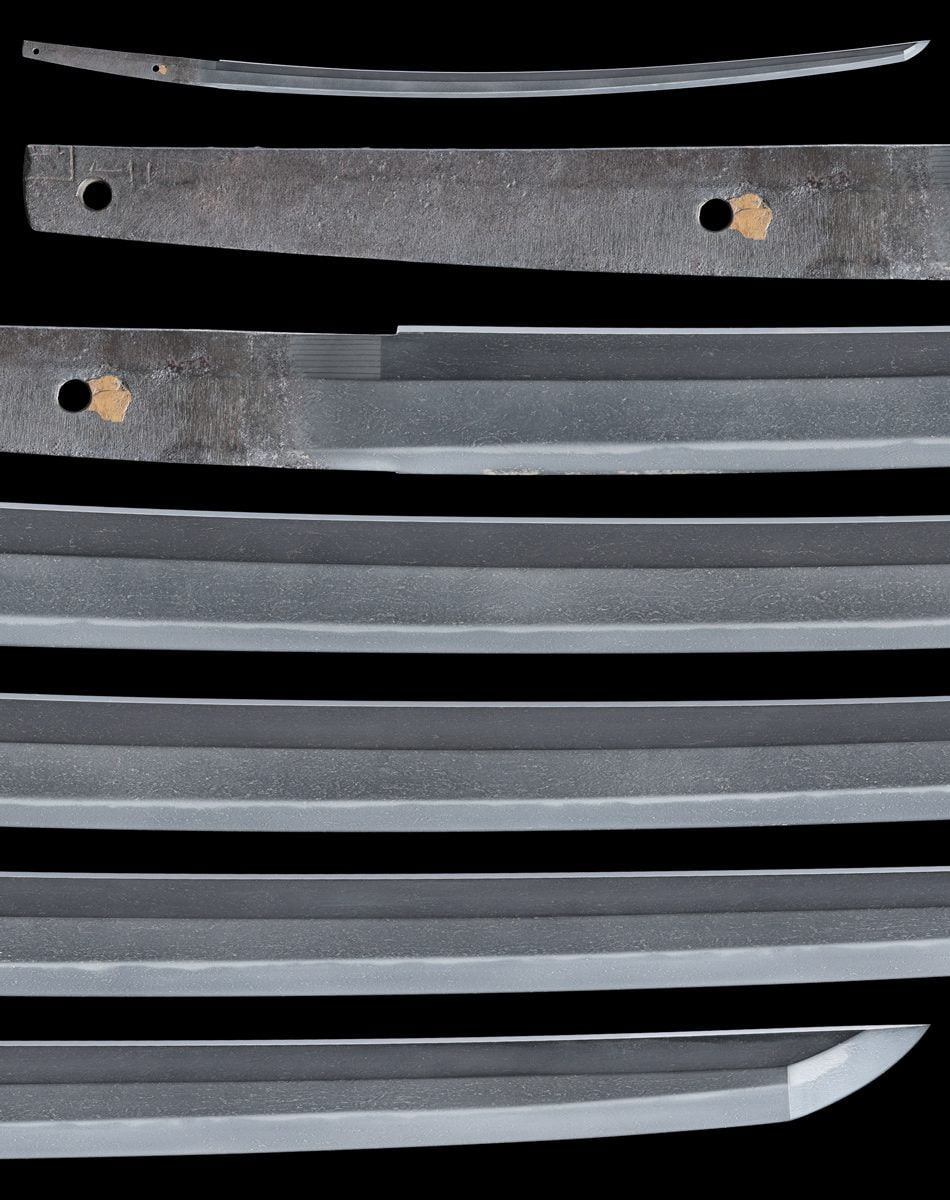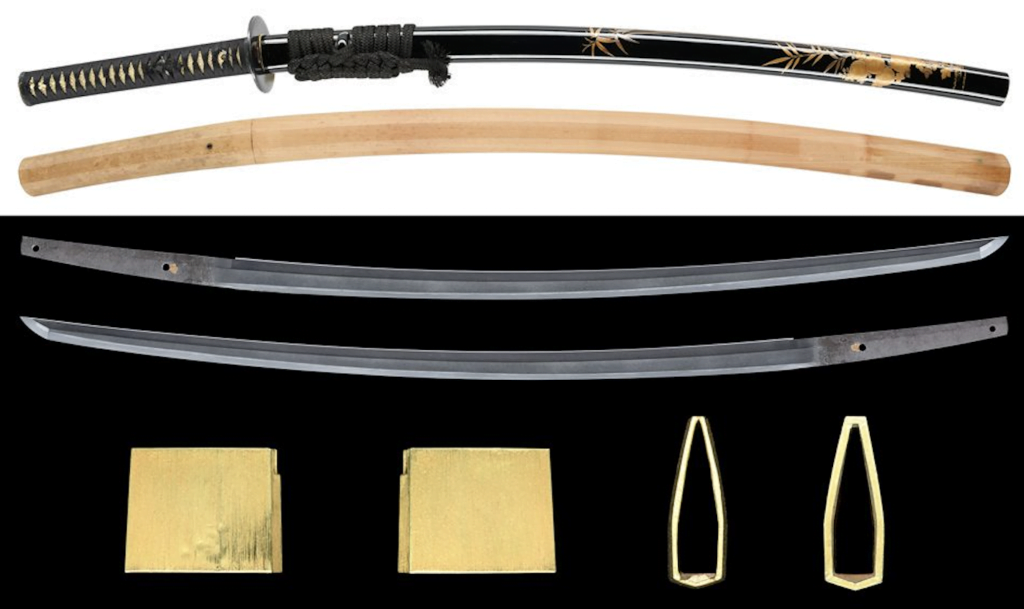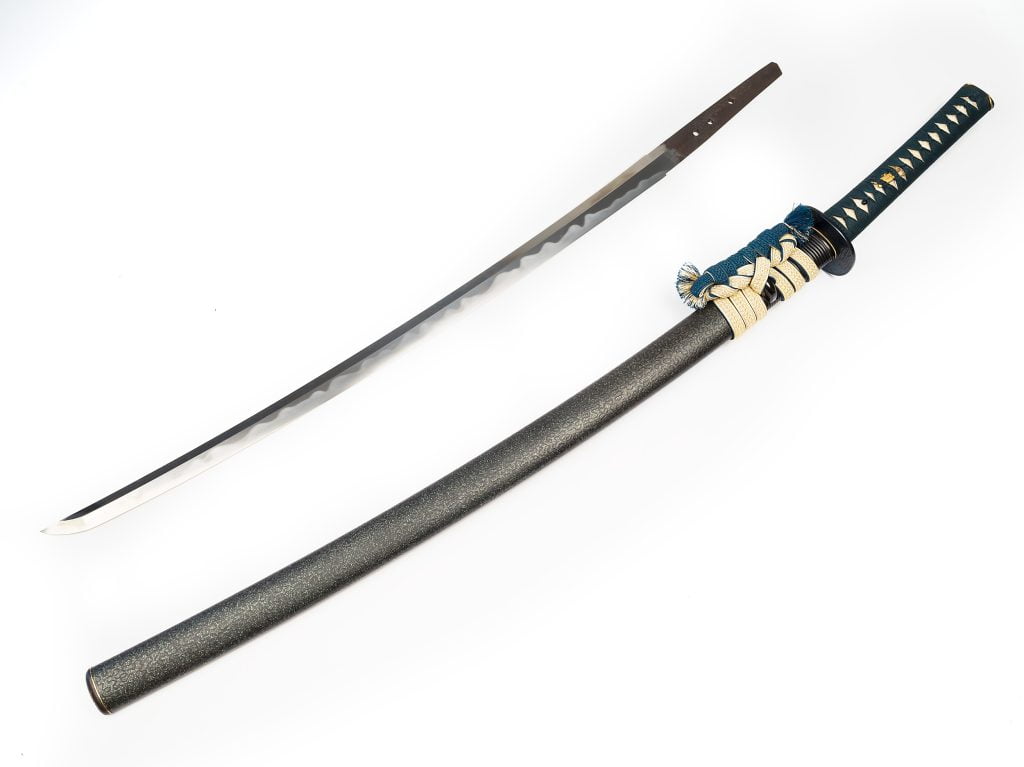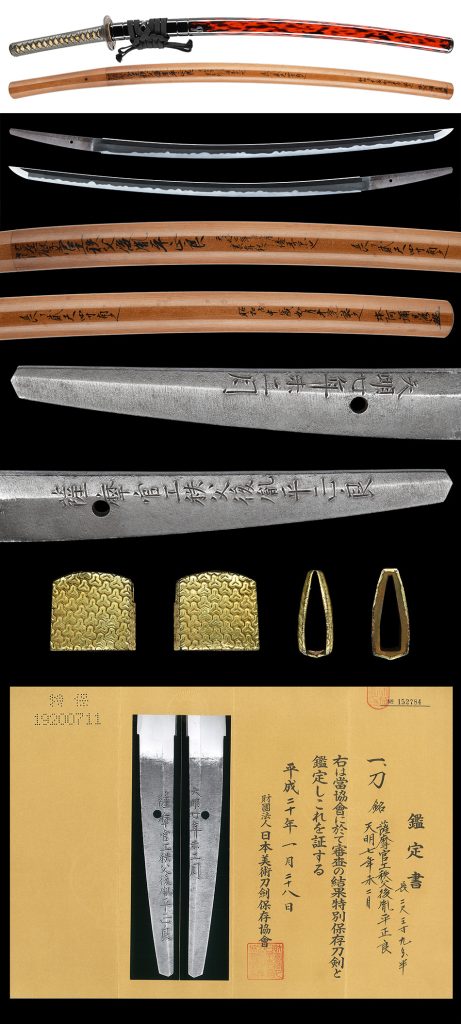Yukikuni
Bitchū Senoo Tachi
Kamakura period (1185-1333)
Country(Kuni)・Era(Jidai):Bicchu (Okayama)・Early Kamakura period about 1185~
Blade length(Cutting edge):65.2cm
Curve(SORI):2.0cm
Width at the hamachi(Moto-Haba):2.60cm
Thickness at the Moto-Kasane: 0.70cm
Wide at the Kissaki(Saki-Haba):1.60cm
Thickness at the Saki-Kasane: 0.55cm
Sword tang(Nakago):Kiriyasuri file pattern
Rivet Holes(Mekugiana):2
Shape(Taihai):Shinogizukuri,Iorimune,Ko-kissaki
Jigane(Hada):Itame and Mokume
Temper patterns(Hamon):Sugu and Notare
Temper patterns in the point(Bohshi):Sugu then Ko-Maru round tip
Registration Card:Osaka
The sword is 65.2 mm long, with a warp of 2.0 mm. The base width is 2.6 mm, while the tip width is 1.6 mm. The tip length is 2.5 mm, and the stem length is 18.2 mm. The stem warp is 0.1 mm.
The blade has a kazukukuri shape, which is a classic sword shape with a slightly curved blade and a normal width. It has a hermitage, which is a slightly noticeable difference in width at the base. The blade also has a normal overlap between the tang (nakago) and the hilt (tsuka). The curvature of the blade is slightly deep compared to other types of Japanese swords, and the length is relatively small.
The blade has a grained texture, and it is also textured and has a heathering pattern. It is thickly coated with earthenware, which gives it a background pattern. The blade also has faint reflections of the ground on its surface, and it has a slightly wavy surface that is known as a windy feel.
The hamon is a wide straight blade with a very shallow droop. It has small alternating eyes here and there, as well as small feet and leaves. The hamon also has a small boiling point, a double blade at the waist, and a slightly bright blade.
The hat is a small, curved tip that is hardened and sharpened. The tang is polished to a smooth finish, and it has a shallow tip. The tang also has a chestnut-jiri shape, which is a type of tang shape that is common in Bicchu swords.
The tang has a slatted (new) cut, which is a type of cut that is common in Bicchu swords. There is a major difference between the old tip of the stem and the new tip of the stem. The tang also has two mekugi holes, which are holes that are used to secure the tang to the hilt. The tang has a two-character inscription on the tip of the stem, but part of the inscription is cut off.
The style shows the highlights of Bitchu blacksmithing, such as the ground grain having a crepe-like texture, the appearance of ground markings, and the sharp differences in the grain, but it is described in the “Moto Kamime Risho” as “Bizen Mono Nishitari”. As the name suggests, it has a somewhat old Bizen atmosphere.
This sword has a classic and elegant appearance that is reminiscent of the early Kamakura period.The grain is slightly grained, has heathering, is thickly coated with earthenware, and has a faint reflection of the ground, and the blade pattern is Hironoshi. The blade hangs very shallowly, there are double blades at the waist, small feet and leaves, and a slight boiling point, giving it an appearance that at first glance resembles that of an old Bizen item. However, the features of the Bitchu line are shown in the way the jitetsu has a mixture of heathered grains and the fact that the raw grains remaining around the inscription are largely out of line. It is a very old-fashioned piece that gives a feeling of moisture to the ground blade, and has a high class quality, and the inscription of Yukikuni is truly valuable. Note that Senoo Kaji differs from Aoe Kaji in that many of their inscriptions are cut into long sword inscriptions.
This important tachi has been awarded the Juyo Token issued by NBTHK (Nihon Bijutsu Touken Hozon Kyokai).
Provenance:
Private collection, Japan
Private collection, Zürich, Switzerland







